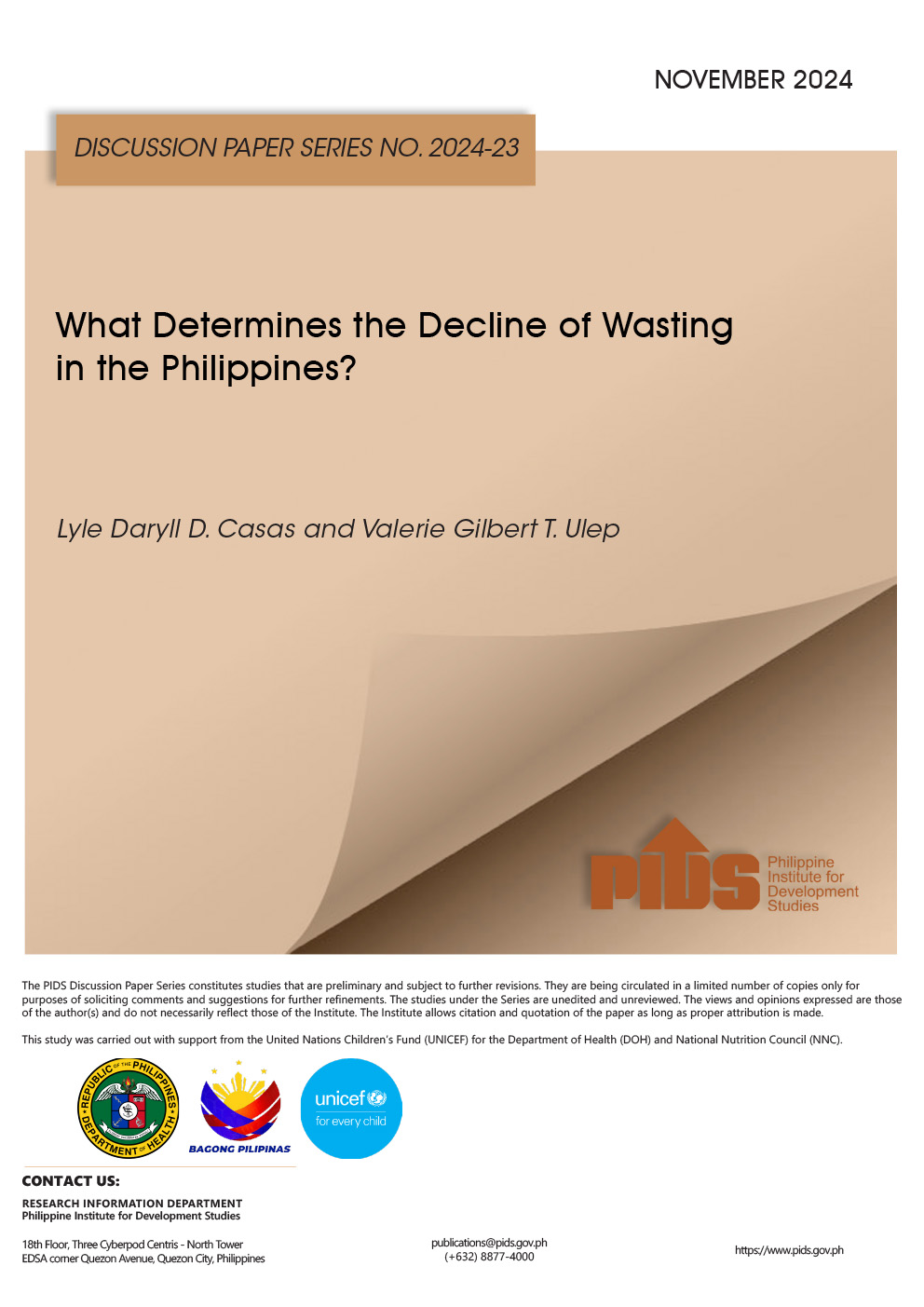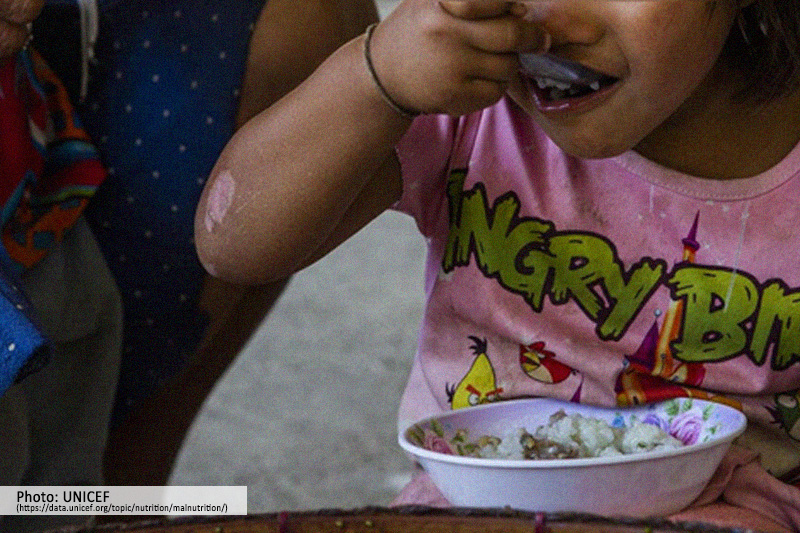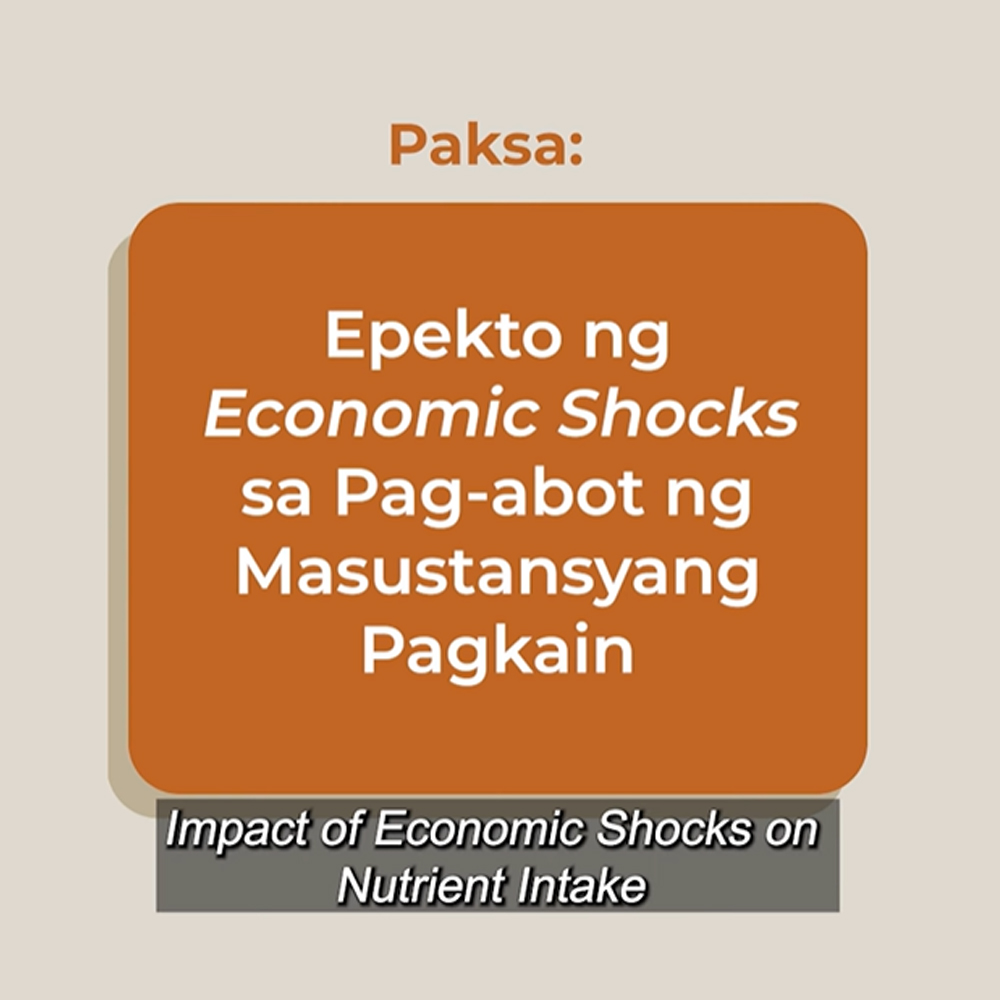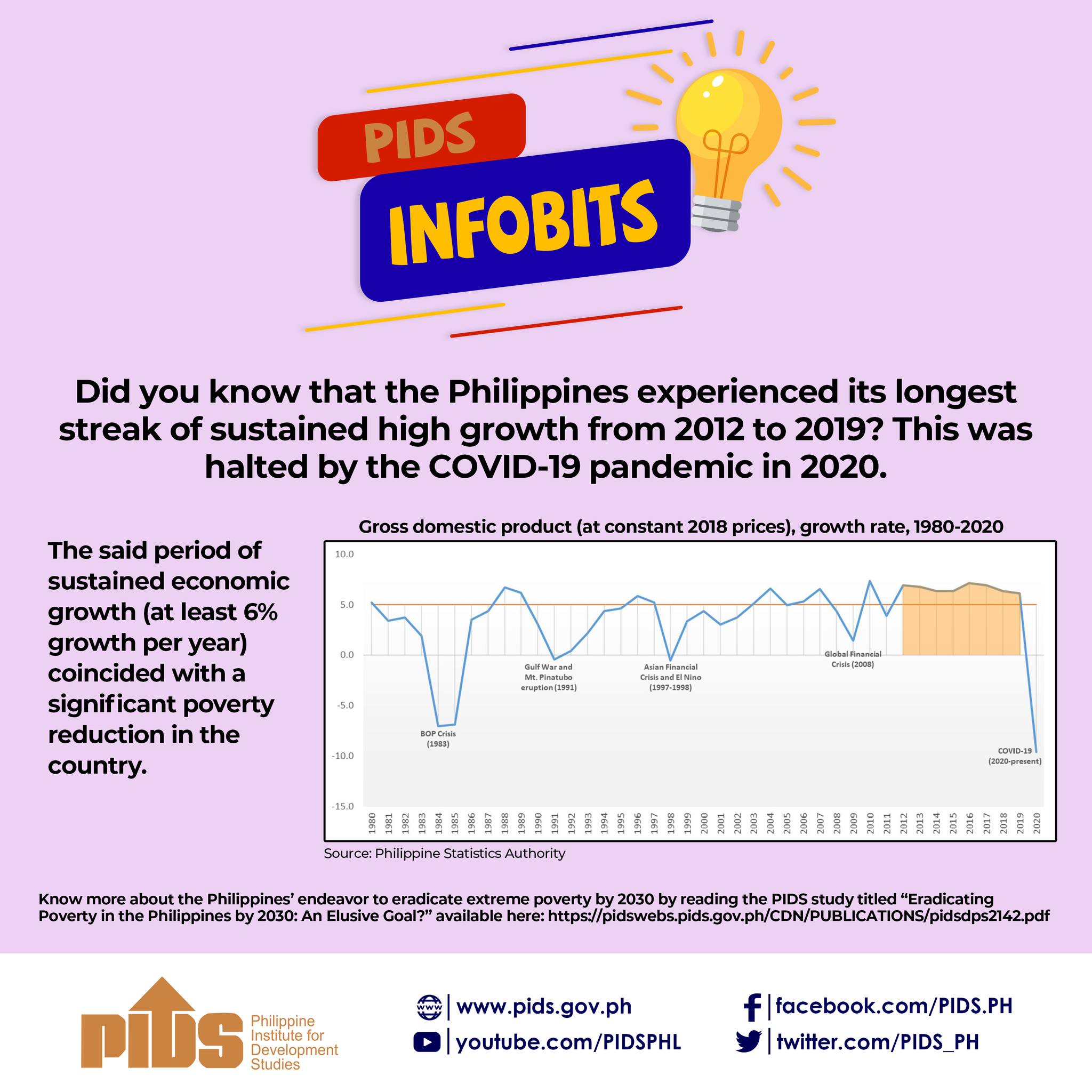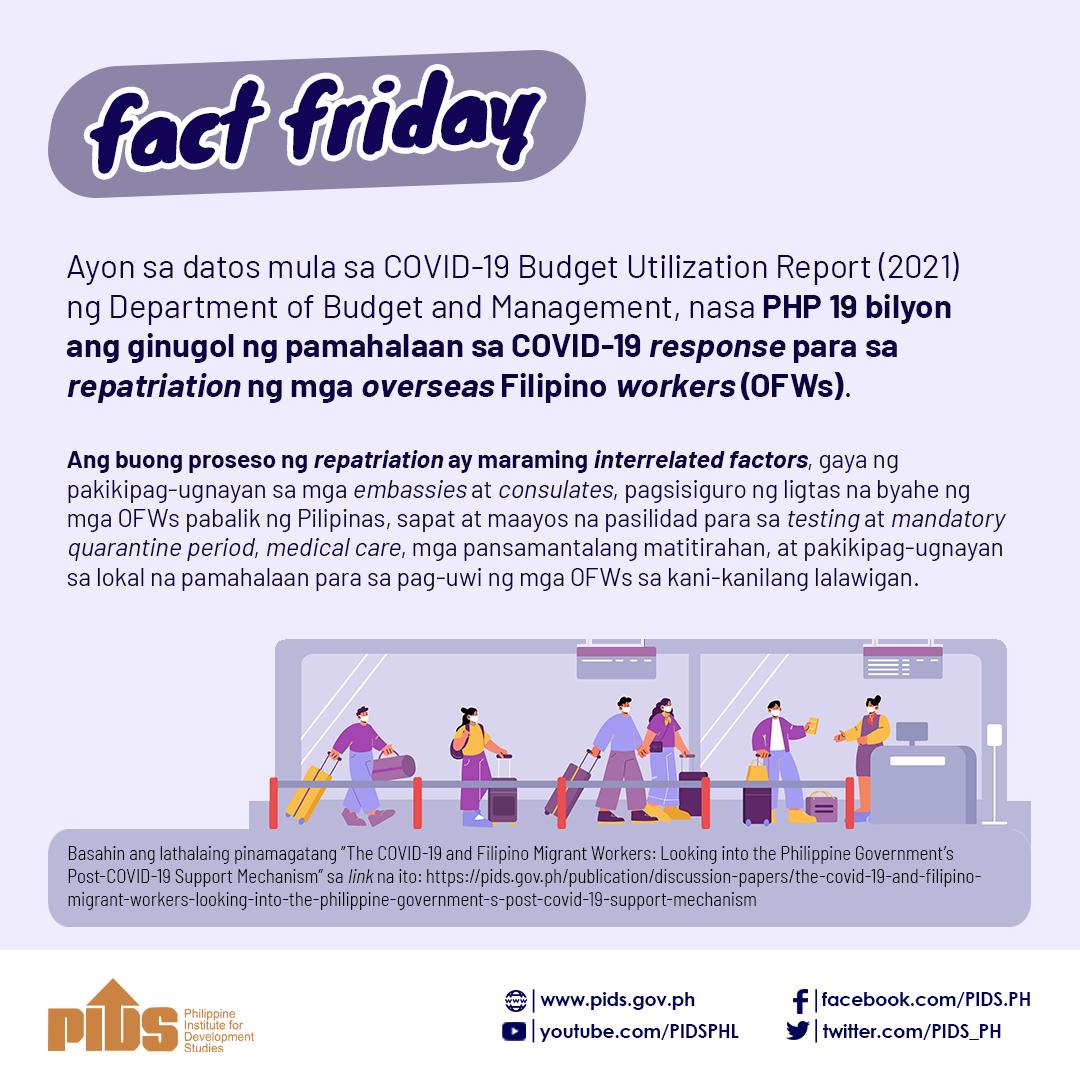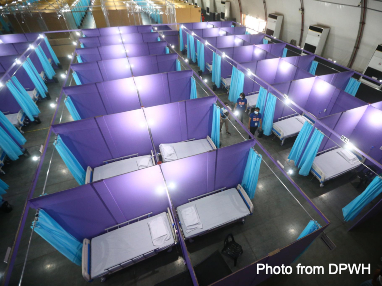
The Philippine government needs to be able to isolate 70 percent of symptomatic cases of the coronavirus disease (COVID-19) if it wants to further push the peak of the pandemic and ease the burden on the country’s health system.
This is according to the latest study of state think tank Philippine Institute for Development Studies (PIDS) titled, “Projected Disease Transmission, Health System Requirements, and Macroeconomic Impacts of the Coronavirus Disease 2019 (COVID-19) in the Philippines”. The paper is authored by PIDS Senior Research Fellow Michael Abrigo, PIDS Supervising Research Specialist Jhanna Uy, PIDS Research Fellow Valerie Gilbert Ulep, and PIDS consultants Nel Jason Haw and Kris Francisco-Abrigo.
Based on available data from the Department of Health-Epidemiology Bureau and existing literature on the epidemiology of COVID-19, the study simulated the spread of the disease in the Philippine population under a no-intervention scenario and five more scenarios with interventions. One of the five is the Luzon-wide enhanced community quarantine (ECQ) while the last four present additional interventions on top of the ECQ.
Among all scenarios simulated by the study, the authors concluded that the best case for the Philippines will happen under Scenario set 5 with the following conditions: the ECQ is extended for two or four weeks, ending on April 26 and May 10 respectively, but is partially lifted to allow essential industries such as food and manufacturing to operate and 70 percent of symptomatic individuals are isolated on the day of symptom onset as opposed to the day they seek care at a health facility.
“Being able to isolate 70 percent of symptomatic cases, even with the partial lifting of ECQ, is able to drastically reduce the number of infected cases on the peak day to only 900,000 cases with the peak predicted to occur much later in May or June 2021,” the authors said. For context, Scenarios 0 to 4 showed extreme results ranging from as high as 18.9 million to 5.2 million infected individuals and a peak month as early as August 2020.
However, they cautioned that extending the ECQ without other mitigation measures will “merely delay the progression of the outbreak and still result in a large number of cases”. Hence, aggressive efforts such as early testing and earlier isolation of symptomatic cases must be undertaken to suppress the outbreak, they added.
Supply vs. demand
The authors stressed that for all scenarios, demands for health care due to COVID-19 at the peak is expected to “far exceed [the] current supply of the health sector”.
Scenario 5 would require a staggering 182,000 beds, 55.5 thousand intensive care unit (ICU) beds, 30 thousand ventilators, 88 thousand doctors, 118 thousand nurses, 11 thousand medical specialists, and 4.41 million personal protective equipment (PPE) sets at its peak in May or June 2021.
The study noted that at present there are only 61,459 beds across all level 2 and 3 hospitals in the country, 1,921 ICU beds and 2,088 ventilators nationwide dedicated to COVID-19 patients, 52 thousand physicians, and 351 thousand nurses in the country. It added that patients with other illnesses will also need the said resources.
Furthermore, the study emphasized that among all scenarios, “only Scenario 5 presents a manageable timeline to scale up health system capacity within a year to a reasonable level that the health system can sustain and benefit from even after the COVID-19 outbreak.”
Scaling up PH health system
Given these findings, the study recommended a “gradual and calibrated transition to a risk-based strategy that combines relaxation of economic restriction while controlling the spread of the virus”.
The government should continue to scale up the country’s testing capacity to reduce turnaround times with laboratory results from around 10 days to around 24-48 hours to ensure that confirmed cases are isolated and their close contacts quarantined as soon as possible.
It also urged the Department of Health to increase the number of contact tracers at the central and regional level as well as provide necessary support for epidemiology surveillance units in local government units (LGUs).
Likewise, LGUs are encouraged to continue building isolation and quarantine facilities to avoid “intrahousehold transmission” and decongest health facilities. Nonessential public spaces, hotels, and schools can be considered as quarantine facilities.
Meanwhile, the study also called for a more humane approach in enforcing quarantine and isolation for suspected and confirmed cases. The Department of Social Welfare and Development, Department of Labor and Employment, Government Service Insurance System, and Social Security System may develop a joint policy that will provide financial incentives for those who will comply with the quarantine guidelines.
More importantly, the government should provide a wide range of support and protection for healthcare workers through constant training about the disease, improved access to PPEs, provision of psychosocial support to reduce burnout and depression, and strengthening of the hospital surveillance system.
The government is also enjoined to increase the imports of medical supplies by relaxing the requirements of the Food and Drug Administration and Bureau of Customs. ###
This is according to the latest study of state think tank Philippine Institute for Development Studies (PIDS) titled, “Projected Disease Transmission, Health System Requirements, and Macroeconomic Impacts of the Coronavirus Disease 2019 (COVID-19) in the Philippines”. The paper is authored by PIDS Senior Research Fellow Michael Abrigo, PIDS Supervising Research Specialist Jhanna Uy, PIDS Research Fellow Valerie Gilbert Ulep, and PIDS consultants Nel Jason Haw and Kris Francisco-Abrigo.
Based on available data from the Department of Health-Epidemiology Bureau and existing literature on the epidemiology of COVID-19, the study simulated the spread of the disease in the Philippine population under a no-intervention scenario and five more scenarios with interventions. One of the five is the Luzon-wide enhanced community quarantine (ECQ) while the last four present additional interventions on top of the ECQ.
Among all scenarios simulated by the study, the authors concluded that the best case for the Philippines will happen under Scenario set 5 with the following conditions: the ECQ is extended for two or four weeks, ending on April 26 and May 10 respectively, but is partially lifted to allow essential industries such as food and manufacturing to operate and 70 percent of symptomatic individuals are isolated on the day of symptom onset as opposed to the day they seek care at a health facility.
“Being able to isolate 70 percent of symptomatic cases, even with the partial lifting of ECQ, is able to drastically reduce the number of infected cases on the peak day to only 900,000 cases with the peak predicted to occur much later in May or June 2021,” the authors said. For context, Scenarios 0 to 4 showed extreme results ranging from as high as 18.9 million to 5.2 million infected individuals and a peak month as early as August 2020.
However, they cautioned that extending the ECQ without other mitigation measures will “merely delay the progression of the outbreak and still result in a large number of cases”. Hence, aggressive efforts such as early testing and earlier isolation of symptomatic cases must be undertaken to suppress the outbreak, they added.
Supply vs. demand
The authors stressed that for all scenarios, demands for health care due to COVID-19 at the peak is expected to “far exceed [the] current supply of the health sector”.
Scenario 5 would require a staggering 182,000 beds, 55.5 thousand intensive care unit (ICU) beds, 30 thousand ventilators, 88 thousand doctors, 118 thousand nurses, 11 thousand medical specialists, and 4.41 million personal protective equipment (PPE) sets at its peak in May or June 2021.
The study noted that at present there are only 61,459 beds across all level 2 and 3 hospitals in the country, 1,921 ICU beds and 2,088 ventilators nationwide dedicated to COVID-19 patients, 52 thousand physicians, and 351 thousand nurses in the country. It added that patients with other illnesses will also need the said resources.
Furthermore, the study emphasized that among all scenarios, “only Scenario 5 presents a manageable timeline to scale up health system capacity within a year to a reasonable level that the health system can sustain and benefit from even after the COVID-19 outbreak.”
Scaling up PH health system
Given these findings, the study recommended a “gradual and calibrated transition to a risk-based strategy that combines relaxation of economic restriction while controlling the spread of the virus”.
The government should continue to scale up the country’s testing capacity to reduce turnaround times with laboratory results from around 10 days to around 24-48 hours to ensure that confirmed cases are isolated and their close contacts quarantined as soon as possible.
It also urged the Department of Health to increase the number of contact tracers at the central and regional level as well as provide necessary support for epidemiology surveillance units in local government units (LGUs).
Likewise, LGUs are encouraged to continue building isolation and quarantine facilities to avoid “intrahousehold transmission” and decongest health facilities. Nonessential public spaces, hotels, and schools can be considered as quarantine facilities.
Meanwhile, the study also called for a more humane approach in enforcing quarantine and isolation for suspected and confirmed cases. The Department of Social Welfare and Development, Department of Labor and Employment, Government Service Insurance System, and Social Security System may develop a joint policy that will provide financial incentives for those who will comply with the quarantine guidelines.
More importantly, the government should provide a wide range of support and protection for healthcare workers through constant training about the disease, improved access to PPEs, provision of psychosocial support to reduce burnout and depression, and strengthening of the hospital surveillance system.
The government is also enjoined to increase the imports of medical supplies by relaxing the requirements of the Food and Drug Administration and Bureau of Customs. ###

